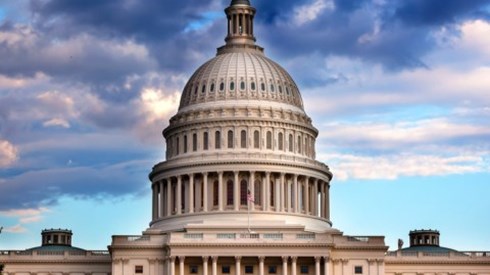Insights from Pinnacle's 2020 Risk Retention Group Benchmarking Study

October 26, 2020

It's somewhat ironic that I haven't written an article on risk retention groups (RRGs) in a fairly long time. Yet, it was my being hired as a chief financial officer for a Vermont-based RRG where I was first introduced to the whole notion of captive insurance.
So, I was excited for several reasons when I found the Pinnacle Actuarial Resources, Inc., 2020 Risk Retention Group Benchmarking Study. 1
First, Captive.com is frequently asked about data concerning the captive insurance market, so knowing this resource exists will be beneficial. This is the third year that Pinnacle has produced the report, so there is the ability to cross-reference information between the three papers. Second, as we find ourselves in the midst of a hard insurance market, something that younger professionals in the captive industry have never experienced, it provides context as to why RRGs came into being in the first place.
According to Captive.com's "History of Captives: The Early Days of Captives," in 1981 the Liability Risk Retention Act was approved by Congress. Under this Act, which was improved in 1986, a group captive could obtain a state license under federally chartered insurance law to directly write all casualty coverages (except direct workers compensation). It gave a boost to the number of group captives, although by the time RRGs became more common, the liability crisis had passed.
While RRGs only have to meet licensing requirements in one state, eliminating the need for fronting, several state insurance commissioners tried to block applications and submissions, and some still do. RRGs are not subject to state guaranty fund assessments.
And, while RRGs are definitely a form of captive insurance, they continue to draw the ire of some state insurance departments because of the preemption they enjoy from the federal government. One needs to look no further for proof of this comment than a letter from the National Risk Retention Association written this past June to the California Insurance Department regarding COVID-19 refunds to policyholders.2 This love/hate relationship is likely to continue.
The Pinnacle report is drawn from industry annual statement data, the most recent being data from the December 31, 2019, filings. The analysis includes information on demographics, capitalization, operating results, premium and loss trends, underwriting expenses, and investment results. Much of the data is reported in graphical form, showing prior years' data as well, which allows for comparisons to be made. It is outside the scope of this article to try to capture all the statistics contained in the piece. We will instead provide some of the information in the executive summary.
"The number of RRGs has been stable over the past 12 years, with 4 onshore domiciles having 10 or more RRGs in 2019," the report states. "Vermont, the District of Columbia, and South Carolina have the most domiciled RRGs. New York, Pennsylvania, and California rank highest in terms of the risk state for written premium." From an editorial perspective, it will be interesting to see how these numbers change in the 2021 report. As market conditions have hardened, there has been renewed interest in alternative insurance options, with RRGs being part of that mix.
"Overall, RRGs tend to be better capitalized than the overall industry. The ratio of net written premium (NWP) to surplus has been decreasing for RRGs over the past several years. The ratio for RRGs is substantially smaller when compared to the insurance industry," the report states.
Again, this is not surprising, driven we suspect by the soft market that had prevailed for the better part of the last 10 years. Group captives, such as RRGs, always struggle with retaining membership in soft market conditions. Given their overall small pool of capital, they can't be as aggressive from a pricing perspective and therefore are subject to having their best insureds cherry-picked by the commercial market.
Looking at the loss side of the income statement, Pinnacle said the following.
Most insurers' primary expenditures are loss and loss adjustment expenses. As such, they are also the primary driver of insurer profitability. Since 2012, RRGs have had higher accident year loss and loss adjustment expense (LAE) ratios than the rest of the industry. Calendar year loss and LAE ratios for the industry have been between 68 percent and 80 percent during the past 10 years, with RRGs having more variability (as expected) due to smaller premium volume and lines of coverage that are susceptible to loss volatility.
Again, while this is not surprising, it also may be due, in part, to how RRGs are structured. As a member (policyholder) owned and operated captive insurer, RRGs should be expected to have lower expense ratios than the primary property-casualty industry. Acquisition costs, general and administrative costs, and profit margins all tend to be less than those of a traditional insurance company. Therefore, this allows RRGs to have slightly higher loss ratios and still remain profitable. The higher loss and LAE ratios result from a number of factors, including pricing, lower deductibles, and items included within LAE. All these items, and others not noted here, are what make RRGs intrinsically interesting to risk managers.
It will be interesting to watch how RRGs expand during this hard market. For years, there have been efforts to expand the Liability Risk Retention Act, especially in regard to property insurance. The Non-profit Property Protection Act (H.R. 4523) aims to do just this.3 As we commented earlier, the tug of war between state insurance regulators and the federal government will likely make this a tough sell. But hard markets have a way of changing attitudes when people and businesses find it cost-prohibitive or impossible to secure insurance.
- The 2020 Risk Retention Group Benchmarking Study is available for download from the Pinnacle Actuarial Resources, Inc., website. Registration is required.
- "NRRA Contests California Insurance Dept. COVID-19 2020-3 and 2020-4 Bulletins," from NRRA Executive Director Joe Deems, National Risk Retention Association (NRRA) website, June 23, 2020.
- "Insurer Reacts to Proposed Non-profit Property Protection Act," by Bethan Moorcraft, Insurance Business America, August 7, 2020.
October 26, 2020



